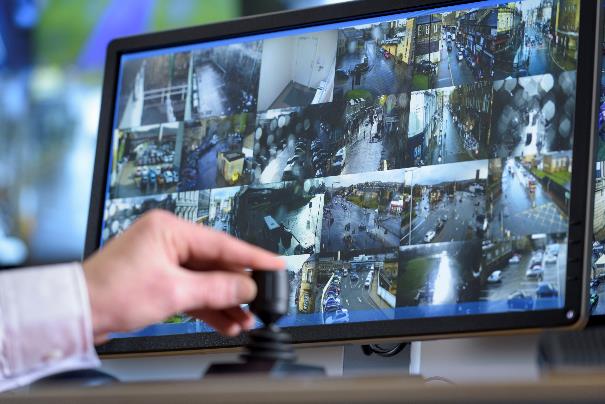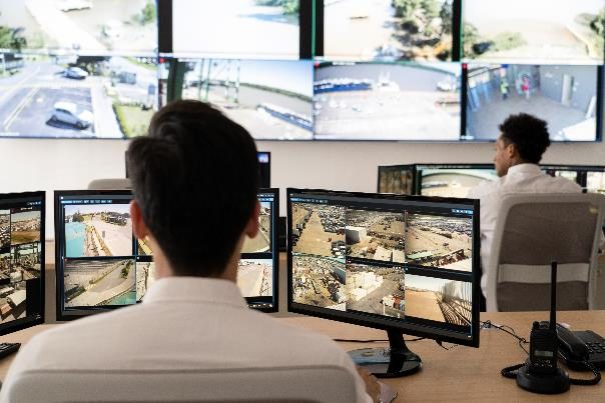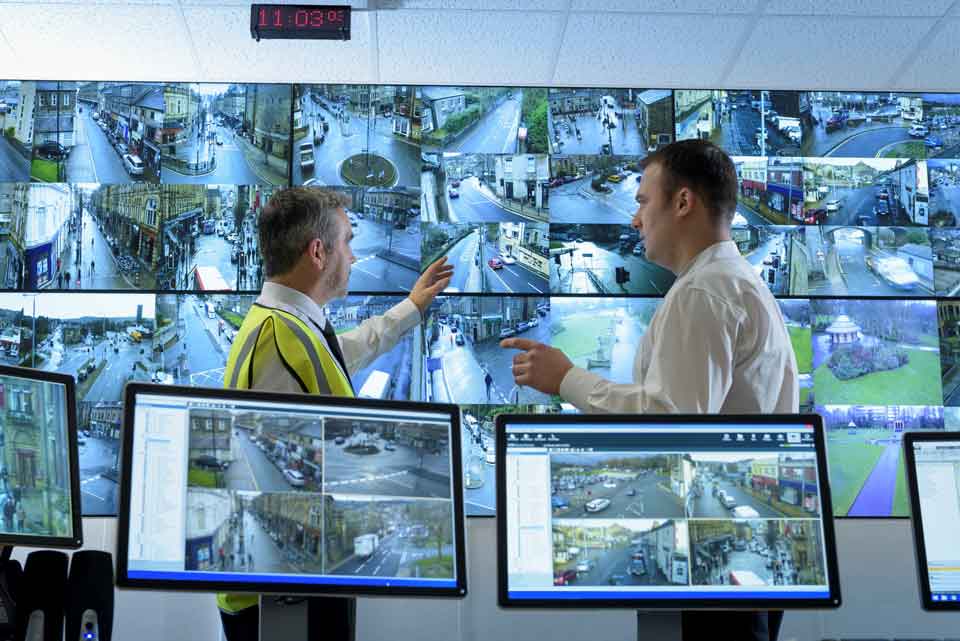Guide to buying video management system, Looking for a new video management system? Here are a few things to consider.There’s a lot to consider when looking to invest in a new video management system (VMS). From budgets and features, technical requirements, and cybersecurity policies, to multiple department approvals. Whether you’re moving away from older video technology or standardizing on an advanced solution for a greenfield project, your new VMS needs to check all the right boxes.
Keep reading for tips that can help narrow down your search.
 Identify your VMS must-haves
Identify your VMS must-haves
Preliminary work
Take an inventory of all the sites, devices, and systems you currently have. It’s also important to identify your bandwidth, power, retention, and storage requirements.
During this process, you’ll gain lots of valuable information that will help you and your team inform your decisions. You might decide to keep some existing equipment or learn that your current storage won’t support your growth plans. You might also learn that you need bandwidth management, network health monitoring, data optimization, video analytics, automation, edge storage, and processing, etc. These insights affect what solution you choose and how you build your video system architecture.
Assess vulnerabilities
If you have an existing deployment, conducting a thorough assessment of potential vulnerabilities and broader opportunities can also be helpful. For example, you may discover that your cybersecurity strategies aren’t robust enough to withstand today’s evolving threats. Or that some remote locations would benefit from cloud-based video systems because of on-site limitations.
Think about tomorrow
Don’t forget to look beyond your video surveillance applications. Are there any other security or business systems that you’d like to integrate with your video system to enhance efficiencies? All this information helps you zero in on your technical requirements and some key must-have VMS features.
But don’t limit these considerations to your immediate needs. When you’re in this phase, build out a tentative five or ten-year roadmap. This helps you pick a solution that can grow with your organization.
 Ensure your new VMS can simplify monitoring tasks
Ensure your new VMS can simplify monitoring tasks
Another big consideration in your VMS decision is your operational requirements and users. For example, think about:
• How many users do we have?
• What are their specific roles?
• What are their specific tasks?
• Do they have special requirements?
• How will they be using the video system every day?
• Do certain user roles or groups need to share information or collaborate during emergencies or investigations?

If you have in-field officers who use body-worn cameras or are dispatched to a scene, a video solution with mobile capabilities could be high on your list of priorities. This also helps if you have operators who work from a main control room to oversee incidents across many sites. Choosing a highly scalable VMS can help your team centrally monitor many systems across your organization.
Guide to buying video management system
Read Also : VMS vs NVR Comparison 2024
What if your team does more after-the-fact investigations than live monitoring? You’re going to want to take a closer look at VMS solutions that help streamline investigative work for your team. VMS features like quick search, visual tracking, video analytics, and digital evidence management could be beneficial to your VMS deployment.
Working through these questions can help you pinpoint some must-have features that make everyday security monitoring tasks easier.
 Prioritize cybersecurity and maintenance tools
Prioritize cybersecurity and maintenance tools
Maintenance is a big part of keeping your VMS optimized and cybersecure. Whether it’s your security or IT teams keeping things up to date, you need to make sure you can easily stay on top of tasks without sapping resources.
First, consider what tools are available that help you protect your data and strengthen your cybersecurity posture. This means looking for a VMS that allows you to build layers of defense using advanced encryption, authorization, and authentication methods.
Beyond that, you should consider video management systems with built-in tools that enhance automation across your maintenance and cybersecurity tasks. For example, choosing a system that helps you streamline software and firmware updates can play a significant role in keeping threats at bay. Receive alerts when new versions are available, including those that come with fixes for known vulnerabilities. This ensures you always have the latest features and defenses available to harden your video deployment.
Advanced video surveillance systems can even automatically track the security of your deployment in real-time and give you a security score. At any time, you can check that score to know how secure your whole system is. You’ll also receive clear actionable steps and recommended best practices to optimize your cyber hygiene.
 Be open to open architecture
Be open to open architecture
Being able to adapt your video management software is critical. After all, you don’t ever want to end up in a situation where you’re limited to video devices that don’t meet your needs.
Choosing an open architecture video system gives you the freedom to make changes over time. This differs from a closed or proprietary VMS, which locks you into a specific vendor’s video cameras, network video records (NVRs), and software. Often, these closed systems limit your flexibility to make the changes you want. This either leads to big compromises in your video deployment or the dreaded rip-and-replace scenario.
“The value was clear from the outset and it was immediately apparent that Genetec would be an important strategic partner for today and tomorrow. The platform is comprehensive, intuitive, and, as part of our five-year strategy, the open architecture gives us so many options.”
An open architecture video system can help reduce upgrade costs. You’ll have the option to keep existing video devices and slowly add new IP cameras and other video technology over time as your needs evolve, or more budget becomes available. You’ll also be able to integrate other security systems such as access control, intrusion, video analytics, automatic license plate recognition, and more.
But there’s a small catch. Not all open video software is created equal. You’ll want to look for a VMS solution that supports a broad ecosystem of video devices and other technologies. The more options you have, the easier it will be to find and implement the best security technologies for your unique application.
 Take a look at cloud and hybrid-cloud video deployments
Take a look at cloud and hybrid-cloud video deployments
More organizations are looking at cloud solutions to expand their video surveillance deployments. Some need to add video coverage to smaller remote sites or require more storage and redundancy. Others are looking for ways to reduce hardware and maintenance costs associated with traditional servers. No matter the reason, a cloud-based VMS is providing viable alternatives to make it all happen.
This is why as you shop around for a new video management system, you’ll want to keep cloud capabilities and solutions on your radar. And remember this—it’s not all cloud or no cloud. By taking a hybrid-cloud method, you can keep existing on-premises installations and expand your storage or build layers of redundancy in the cloud.
You can also migrate away from closed VMS solutions using new cloud-connected infrastructure solutions or expand video coverage to smaller sites using Software-as-a-Service (SaaS) solutions. All your on-premises video and cloud-based solutions come into the same central VMS software. That means your operators can monitor video and review archived footage from all your sites in one place.
Another benefit of choosing a cloud video management system is enhanced cybersecurity. When you migrate some systems over to the cloud, your team no longer needs to travel to various locations to manage infrastructure, handle updates, or check system health. Instead, you’ll get many built-in tools to automate processes and harden your video systems remotely.
Everything from device firmware and software patches to other critical security data is also automatically pushed to your system. This takes the burden off your IT and security staff to ensure that your physical security systems are up to date.
 Make built-in privacy features a must
Make built-in privacy features a must
As you narrow down your search for a VMS, it’s important to consider data privacy in your decision. Whether it’s the General Data Protection Regulation in Europe, the California Privacy Act in the United States, or any other privacy regulations that apply to your region or business, you need to ensure full compliance. After all, an unreported data breach not only comes with hefty fines but can also cause massive reputational damage.
First, take time to assess your data usage and the policies you have in place. This can include asking questions such as ‘What type of video and data are we collecting? How are we collecting video and data, and where is it all being stored? Who has access to our live and recorded data and for what purpose? With whom and how are we sharing our data?’
Then, make sure to choose video software that is built with privacy in mind. You’ll have all the built-in tools to secure your video and keep it out of the wrong hands, with cybersecurity and privacy features enabled by default.
With a VMS built with Privacy by Design, you can set retention times to make sure you’re only collecting and storing the video you need. You can also limit access to sensitive data depending on your users’ roles and responsibilities. You might also consider using privacy masking tools to automatically obscure individuals’ faces caught within a camera’s field of view, so security operators only see what they need to see.
 A new VMS should offer operational benefits
A new VMS should offer operational benefits
Every day, your video system collects a lot of information. This data can inform operational improvements across the entire business and support new digital transformation initiatives.
But when you’re collecting so much data, it can be difficult to make sense of it all. As you consider how to extract more operational value from a VMS, look for video systems that offer you rich data visualization tools. That means having data displayed in maps, charts, or histograms, rather than in databases and spreadsheets. This can help you quickly find valuable insights and uncover a few unexpected issues.
For instance, a data-driven view can help your team identify patterns in security incidents and better understand how current security strategies measure up. From there, they might find opportunities to enhance incident response or make cost-saving improvements to standard operation protocols (SOPs).
Combining video surveillance with video analytics can lead to significant business outcomes. This includes tracking how many people come into your business, or how long they wait in lines. You can then deploy more staff or resources to address gaps in customer service. You can also better understand how your employees use your offices and make changes to optimize your spaces.
 Choose VMS vendors you can trust
Choose VMS vendors you can trust
There’s no denying that cyberattacks have become more sophisticated and prevalent than ever before. Today, ensuring resilience isn’t limited to having the latest defenses at hand. You also need to scrutinize your entire supply chain ecosystem and establish baseline security standards for the video solutions you purchase and the vendors you partner with.

While finding a new VMS solution that meets all your requirements is important, so is choosing video technology vendors that you can trust. In the end, you should aim to standardize on cybersecurity-minded vendors across all your video surveillance infrastructure.
To identify video technology providers that truly value security and data privacy, consider asking your VMS partners the following questions:
A final tip—Invest in unified security
When you’re looking for a new video surveillance system, it’s easy to get hyper-focused on the task at hand. But thinking this way can limit what you can do and achieve in the future. If you choose a system with many disparate video and security solutions, it might not be designed to scale, limiting integration capabilities with your other core security technologies.
Instead of thinking only about your immediate video needs, take time to establish how you plan to evolve. Think about your video system growth and longer-term security objectives. Broaden your vision to other security and business systems that are currently operating in your environment. Consider where cloud technologies might fit within your deployment, whether it’s today or in the future. Talk to other department leaders and learn how physical security data could inform new business outcomes.
All of this will show you how and why investing in a unified security strategy will be a game-changer for your security operations and your entire organization.



Eager to boost your video management system? Prioritize security features for peace of minds, explore user-friendly interfaces, and clever integrations. Personalizing your system can make managing videos a breeze—protect your data like a pro and enjoy a streamlined experience!